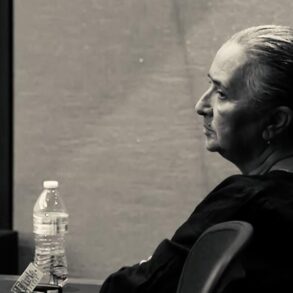
Judge Lewis Kaplan has had enough of Samuel Bankman-Fried’s envelope-pushing.
“He has gone up to the line over and over again and I am going to revoke bail,” the US district judge ruled Friday. So he sent the disgraced 31-year-old cryptocurrency mogul to jail, rather than allow him to continue to hang out in his parents’ home in Palo Alto, California, while awaiting trial on charges of defrauding investors in his business.
Kaplan decided that Bankman-Fried’s leaking to the New York Times of some of his ex-girlfriend’s personal correspondence may have amounted to witness tampering, a federal crime.
Kaplan’s ruling raises complex questions about press ethics, the limits of free speech and how public figures are treated in the criminal justice system.
It also echoes US district court judge Tanya Chutkan’s almost simultaneous rebuke of Donald Trump last week as she rejected his apparent desire to speak freely about evidence and witnesses. In characteristic fashion, Trump had posted on social media this unsubtle, all-caps warning to unnamed parties: “IF YOU GO AFTER ME, I’M COMING AFTER YOU.”
Chutkan warned the former president Friday that she would take measures to prevent him from intimidating witnesses or influencing jurors in his upcoming trial on charges of trying to overturn the 2020 election.
Bankman-Fried’s bail dispute was prompted by a recent Times article based on private correspondence by Caroline Ellison, who was not only Bankman-Fried’s girlfriend at one time but also an executive at one of his businesses. She wrote in Google documents and in a handwritten diary about her unhappiness and sense of being overwhelmed in her job, given her sporadic relationship with SBF.
“At the end of the day, I can’t wait to go home and turn off my phone and have a drink and get away from it all,” she was quoted in the Times.
Having pleaded guilty to fraud charges, Ellison is cooperating with prosecutors and likely will be a key witness in the trial.
Bankman-Fried’s lawyers insist that in his many recent contacts to the media – far beyond the Times – he has only been trying to defend himself against all the negative press coverage that has followed the collapse of his company, FTX, last fall. And they say he has every right to do so.
But the Times article in July prompted a temporary gag order on SBF from Judge Kaplan. Times lawyer David McCraw objected, on first amendment grounds and defended the paper’s decision to publish the Ellison piece.
“It is not surprising that the public wants to know more about who she is and what she did and that news organizations would seek to provide to the public timely, pertinent and fairly reported information about her, as The Times did in its story,” he wrote to the judge.
Columbia University journalism professor Bill Grueskin told me Monday that he found the Times story newsworthy and unobjectionable from a press-ethics standpoint.
“The stakes are so high and Ellison is going to be such an important witness,” Grueskin said. “And much of this is going to come out at trial anyway.” Unlike a story that would, for example, endanger a confidential witness or divulge a critical matter of national security, he considers this fair game for publication.
Katie Townsend, legal director of the Reporters Committee on Freedom of the Press, told me Monday that she agrees with McCraw and found Kaplan’s gag order to be “overly wrought”. It’s important, she said, that such orders be narrowly tailored.
Now that Bankman-Fried’s bail has been revoked, the gag order has expired, she said, but these issues are likely to come up again – including in Trump’s ongoing legal battles, given that he’s running for president at the same time.
Certainly, it’s incumbent on news organizations to do some soul-searching before they publish a story like this, weighing their core mission to inform the public against the possibility that they are helping a defendant manipulate the justice system. It’s not always an easy call.
Was Ellison’s correspondence newsworthy? In a broad sense, yes. It would certainly get readers’ attention and perhaps bring insight.
Was there a strong public-interest reason to publish? Perhaps but Judge Kaplan characterized Ellison’s correspondence as something that a person “would be very unlikely to share with anybody, least the New York Times, except to hurt, discredit and frighten the subject of the material”.
Neither Judge Kaplan or Judge Chutkan strike me as insensitive to the legitimate first amendment rights of defendants, but neither of them look like a pushover either. And it’s their job, after all, to protect witnesses’ safety and jurors’ impartiality in the interest of a fair trial.
But for both of these criminal defendants – so unaccustomed to hearing the word “no” – keeping their power dry while awaiting trial, must seem like something that applies only to lesser mortals.
-
Margaret Sullivan is a Guardian US columnist writing on media, politics and culture
This post was originally published on this site be sure to check out more of their content.







